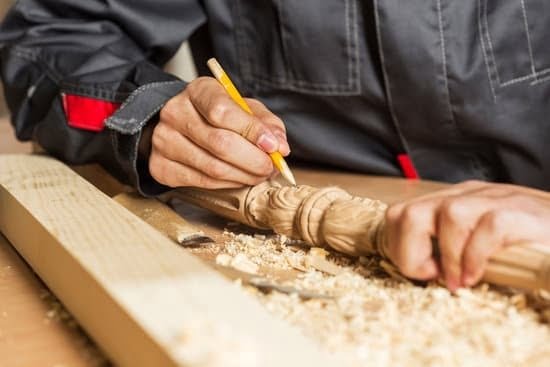When was the first woodworking tools made? Woodworking has a long and rich history, dating back to ancient times. From simple hand tools to modern, high-tech machinery, woodworking has evolved significantly over the centuries. This article will explore the origins and development of woodworking tools throughout history, from their early beginnings to the impact of the Industrial Revolution and beyond.
The history of woodworking tools can be traced back to ancient civilizations, where early humans used simple tools such as stone axes and chisels to shape wood for various purposes. As societies advanced, so did their woodworking techniques and tool designs, leading to significant advancements in craftsmanship.
Throughout this article, we will delve into the evolution of woodworking tools from ancient times to the Middle Ages, exploring how technological advancements and cultural influences shaped the development of these essential instruments. We will also examine the impact of key historical periods such as the Renaissance era and the Industrial Revolution on woodworking tools, as well as highlight notable innovations and advancements that have contributed to shaping modern woodworking practices.
As we journey through the history of woodworking tools, we will gain insight into not only how these tools have evolved over time but also the cultural and societal impacts of their development. Join us as we explore this fascinating aspect of human history and craftsmanship.
Early Beginnings
Woodworking is a practice that has been around for centuries, and the origins of woodworking tools can be traced back to ancient times. The first woodworking tools were simple implements such as stone axes, flint knives, and bone chisels that were used by early humans for shaping wood. These primitive tools laid the foundation for the development of more advanced woodworking tools in the future.
The earliest evidence of woodworking tools dates back to the Neolithic period, around 10,000 BC, when humans began to settle in permanent communities and started utilizing wood for construction, carving, and other purposes. Archaeological findings from this era have revealed the existence of various woodworking tools such as adzes, gouges, and drills made from materials like stone, bone, and antler.
During the Bronze Age, which began around 3300 BC in some parts of the world, there was a significant advancement in the production of woodworking tools. Metalworking techniques allowed for the creation of more durable and efficient tools such as saws, chisels, and axes.
This marked a crucial turning point in the history of woodworking tools as it paved the way for further innovations and improvements in craftsmanship. The use of bronze also led to greater precision in woodworking and enabled artisans to create more intricate designs in their work.
Evolution of Woodworking Tools
Woodworking has been an integral part of human civilization for centuries, with the earliest woodworking tools dating back to ancient times. The development of woodworking tools played a crucial role in shaping the way people constructed and created objects from wood. From the simplest hand tools to more complex devices, the evolution of woodworking tools has seen significant advancements over time.
Ancient Woodworking Tools
The first woodworking tools can be traced back to around 2500-1500 BCE, during the Bronze Age. At this time, early civilizations such as the Egyptians, Mesopotamians, and Greeks began crafting simple but effective woodworking tools made from bronze and other metals. These primitive tools included axes, chisels, adzes, and saws, which were used for tasks such as shaping wood, carving intricate designs, and building structures.
Woodworking Tools in the Middle Ages
During the Middle Ages, woodworking tools continued to evolve as new techniques were developed and refined. The use of iron became more widespread, leading to stronger and more durable tools. This period saw the introduction of specialized woodworking tools such as planes for smoothing surfaces and braces for drilling holes. Craftsmen honed their skills with these improved tools, leading to elaborate woodwork in architecture, furniture making, and decorative arts.
Advancements in Woodworking Technology
The advancements in woodworking tools during ancient times and the Middle Ages laid the groundwork for further innovation throughout history. These early inventions paved the way for mechanized woodworking processes during the Industrial Revolution and influenced modern power tools that are widely used today.
Throughout these historical periods, the development of woodworking tools not only revolutionized craftsmanship but also had a profound impact on various aspects of society. From building grand structures to creating intricate works of art, woodworking tools have left an indelible mark on human civilization.
The Renaissance Era
During the Renaissance Era, woodworking tools saw significant advancements and improvements that revolutionized the way woodworkers approached their craft. This period, spanning from the 14th to the 17th century, was characterized by a renewed interest in art, architecture, and craftsmanship, leading to innovations in various fields, including woodworking.
Introduction of Precision Tools
One of the most notable advancements during the Renaissance era was the introduction of precision tools such as the screwdriver, calipers, and compass. These tools allowed woodworkers to work with greater accuracy and detail, leading to more intricate and refined finished products. The precise measurements made possible by these tools contributed to the symmetrical designs and intricate carvings that became synonymous with Renaissance-era woodworking.
Advancements in Turning Techniques
The Renaissance also saw significant developments in turning techniques, particularly with the introduction of the pole lathe and flywheel lathe. These innovations allowed woodworkers to create turned wood pieces with greater speed and efficiency. The ability to produce turned spindles, columns, and decorative elements more quickly revolutionized furniture making and architectural ornamentation during this time.
Integration of Artistic Elements
Furthermore, woodworking during the Renaissance era began to integrate more artistic elements into its designs. Woodworkers were not only craftsmen but also artists who incorporated intricate carvings, inlays, marquetry, and ornate details into their work. The rise of humanism fueled a desire for beauty and refinement in everyday objects, leading to an increased emphasis on aesthetics within woodworking.
The advancements made during the Renaissance era laid the foundation for modern woodworking techniques and technologies that continue to influence the craft today. From precision tools to artistic integration in design, these developments set a standard for woodworking craftsmanship that has stood the test of time.
Industrial Revolution
The Industrial Revolution marked a significant turning point in the history of woodworking tools. This period, which began in the late 18th century and continued into the 19th century, brought about dramatic changes in the way woodworking tools were produced and used. With the invention of new machinery and techniques, there was a shift from traditional handmade tools to mass-produced items, leading to increased efficiency and productivity in woodworking.
One of the most notable impacts of the Industrial Revolution on woodworking tools was the introduction of mechanized production methods. Machines such as lathes, planers, and saws revolutionized the way wood was processed and shaped, allowing for greater precision and uniformity in the creation of wooden components. This transformed woodworking from a labor-intensive craft to a more streamlined and standardized industry.
The availability of new materials also played a crucial role in shaping the development of woodworking tools during this time. The use of iron and steel for tool blades and components replaced traditional materials such as bronze and copper, leading to more durable and long-lasting implements. Additionally, advancements in metallurgy allowed for the creation of specialized cutting edges that improved the performance of woodworking tools, making them more effective and versatile than ever before.
| Impact | Description |
|---|---|
| Mechanized production | The Industrial Revolution brought about the introduction of mechanized production methods for woodworking tools, leading to increased efficiency and productivity. |
| New materials | The use of iron and steel for tool blades replaced traditional materials, resulting in more durable implements. |
| Advancements in metallurgy | Improvements in metallurgy allowed for specialized cutting edges that enhanced the performance and versatility of woodworking tools. |
Overall, the Industrial Revolution had a profound impact on woodworking tools by transforming them from handcrafted artifacts to mass-produced essentials. It laid the groundwork for modern techniques and materials that continue to influence woodworking practices today.
Modern Woodworking Tools
Woodworking tools have come a long way since their first creation. The first woodworking tools are believed to have been made during the Neolithic period, around 10,000 BC. These early tools were simple and made from stone, such as flint or obsidian, and were used for cutting, shaping, and carving wood. Over time, as civilizations advanced, so did the technology behind woodworking tools.
During the Industrial Revolution in the 18th century, there was a significant impact on woodworking tools. With the invention of steam power, mass production became possible, leading to the production of more complex and precise woodworking machinery. This era saw the rise of woodworking machinery such as lathes, planers, and saws that revolutionized the industry.
In modern times, innovations in technology have had a huge impact on woodworking tools. Electric-powered tools such as drills, sanders, and routers have made woodworking more efficient and accessible to a wider range of people. Additionally, computer-aided design (CAD) has allowed for greater precision and customization in woodworking projects. From hand tools to power tools to advanced machinery, the evolution of woodworking tools continues to be driven by technological advancements.
| Woodworking Era | Technological Advancements |
|---|---|
| Neolithic Period (10,000 BC) | Simple stone tools for cutting and shaping wood |
| Industrial Revolution (18th century) | Invention of steam-powered machinery for mass production |
| Modern Times | Electric-powered tools and computer-aided design for precision |
Notable Woodworking Tools Throughout History
Woodworking tools have been a crucial element in the development of civilization, providing assistance in various tasks and crafts related to woodworking. Throughout history, there have been several notable woodworking tools that have played a significant role in shaping the industry and influencing the way we work with wood. Here are some of the most noteworthy woodworking tools that have left an enduring impact:
- Adze: The adze is a cutting tool with a curved blade used for smoothing or carving wood. It has been utilized since ancient times and was essential in shaping wooden objects such as bowls, furniture, and sculptures.
- Chisel: Dating back to ancient civilizations, chisels have been widely used for cutting, carving, and shaping wood. With its sharp blade and handle, it remains one of the fundamental tools in woodworking.
- Hand Plane: Originating in ancient Greece and Rome, hand planes were used for smoothing and shaping wooden surfaces. Over time, they evolved into various designs and sizes to cater to different woodworking needs.
As technology advanced, new woodworking tools were developed to improve efficiency and precision in wood crafting. Some of these innovations include power tools such as electric saws, sanders, routers, and drills. These modern woodworking tools have revolutionized the industry by streamlining production processes and enabling craftsmen to create more intricate designs with ease.
- Circular Saw: Invented in the late 18th century, the circular saw quickly became a staple tool in woodworking due to its ability to make precise cuts on wood and other materials.
- Bandsaw: Patented in the early 19th century, the bandsaw allowed for intricate curved cuts in wood and metal. It became an essential tool for furniture making and pattern cutting.
- Electric Router: Developed in the early 20th century, electric routers transformed woodworking by enabling detailed edge profiles, joinery work, and decorative flourishes on wood surfaces.
The continuous innovation of woodworking tools has significantly impacted how craftsmen work with wood today. From traditional hand tools to advanced power equipment, these notable woodworking tools have shaped the industry’s history and continue to influence modern practices.
Conclusion
The impact of the first woodworking tools made can be seen throughout history, as these tools have played a crucial role in shaping civilizations and advancing technology. From the early beginnings to the modern era, woodworking tools have evolved and transformed, leaving a lasting impact on society. Let’s take a closer look at how the first woodworking tools made have influenced and shaped our world.
Throughout ancient times and into the Middle Ages, woodworking tools were predominantly made from stone, bone, and wood. These early tools laid the foundation for future innovations in woodworking, setting the stage for advancements in craftsmanship and design. The use of primitive woodworking tools allowed early civilizations to build structures, create furniture, and develop other essential items for daily life.
During the Renaissance era, there was a significant shift in woodworking tool technology. Metalworking techniques improved, leading to the creation of more durable and efficient tools. This advancement allowed for greater precision and intricacy in woodworking projects, paving the way for stunning works of artistry during this period.
The industrial revolution brought about a dramatic change in woodworking tools. With the introduction of steam power and mechanized production processes, woodworking became more streamlined and accessible. This shift revolutionized the way furniture and other wooden goods were produced, making them more affordable and readily available to a wider audience. As technology continued to evolve, so did woodworking tools – leading to innovations that have greatly impacted modern craftsmanship.
Bonus Section
In conclusion, the history of woodworking tools is a fascinating journey that spans thousands of years, from the earliest known tools made by our ancient ancestors to the innovative and technologically advanced equipment used in modern woodworking. The evolution of woodworking tools has been influenced by significant historical eras such as the Ancient Times, Middle Ages, Renaissance, and Industrial Revolution. Each era brought new advancements and developments that have shaped the way woodworking is practiced today.
Throughout history, woodworking tools have played a crucial role in shaping civilizations, from building structures and furniture to creating works of art. Notable examples of woodworking tools include the hand adze used by ancient Egyptians, the plane and chisel developed during the Renaissance period, and power tools introduced during the Industrial Revolution. These tools have not only served practical purposes but also have cultural and artistic significance.
As we look back at the impact of the first woodworking tools made, it is important to recognize their enduring legacy and continued relevance in contemporary times. Woodworking remains an integral part of human civilization, and the craftsmanship and precision demanded by this practice are a testament to the skill and ingenuity of those who came before us. Whether crafting functional items or creating intricate designs, woodworking tools have undoubtedly left an indelible mark on history.
Frequently Asked Questions
When Were Woodworking Tools Invented?
Woodworking tools have been in use for thousands of years, with evidence of their existence dating back to the Neolithic era around 7000-3300 BC. These early tools were simple implements made from stone, bone, and wood.
What Is the Oldest Woodworking Tool?
The oldest woodworking tool that has been discovered is the bow drill, which dates back to ancient times. This tool was used for boring holes in materials like wood and shell, and its basic design has persisted through the centuries.
How Old Are Wood Tools?
Woodworking tools have a long and rich history, evolving alongside human civilization. From the rudimentary stone and bone tools of prehistoric times to the sophisticated power tools of today, wood tools have played a crucial role in shaping our world and continue to be an essential part of craftsmanship and construction.

Hi everyone! I’m a woodworker and blogger, and this is my woodworking blog. In my blog, I share tips and tricks for woodworkers of all skill levels, as well as project ideas that you can try yourself.





